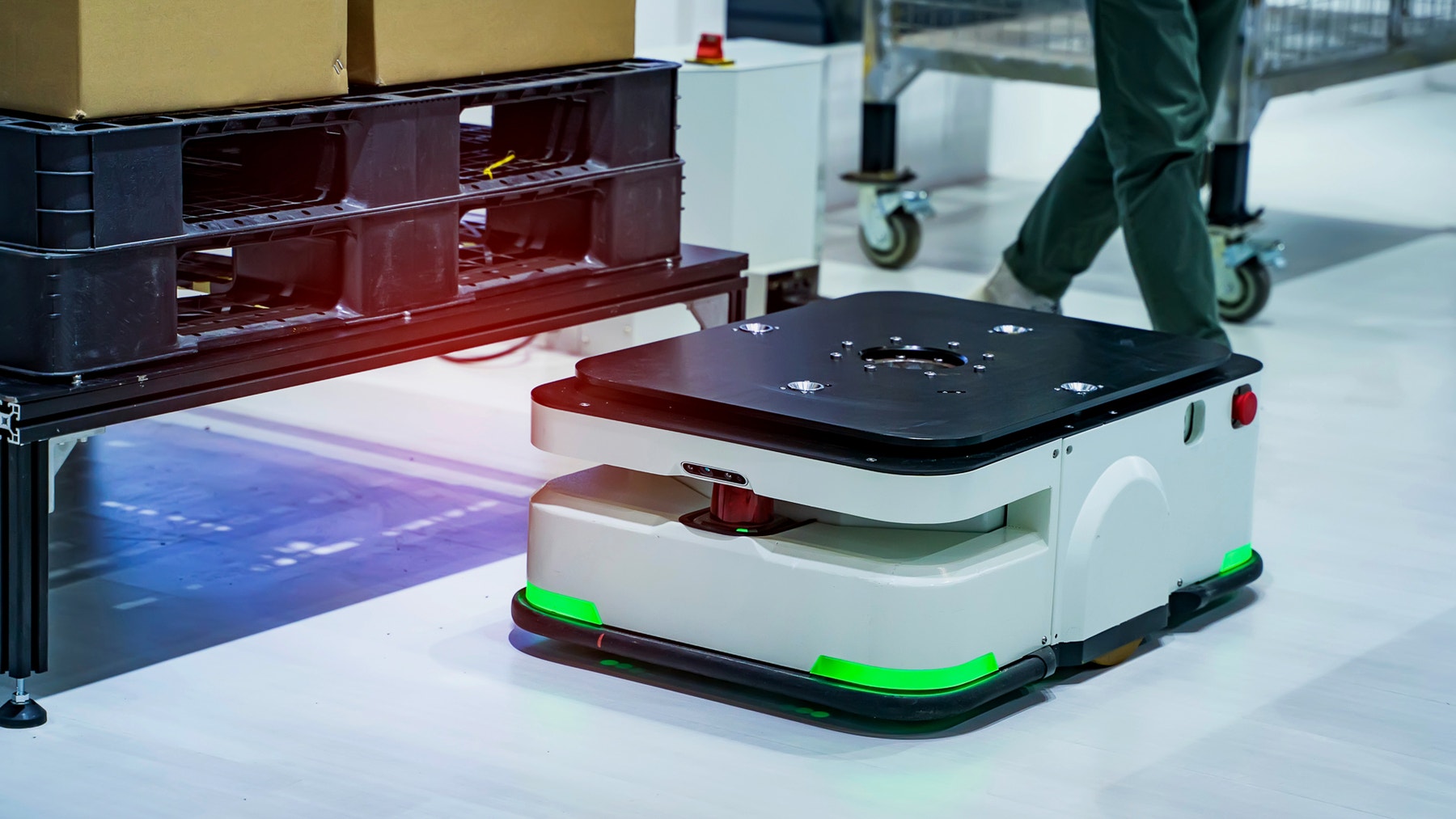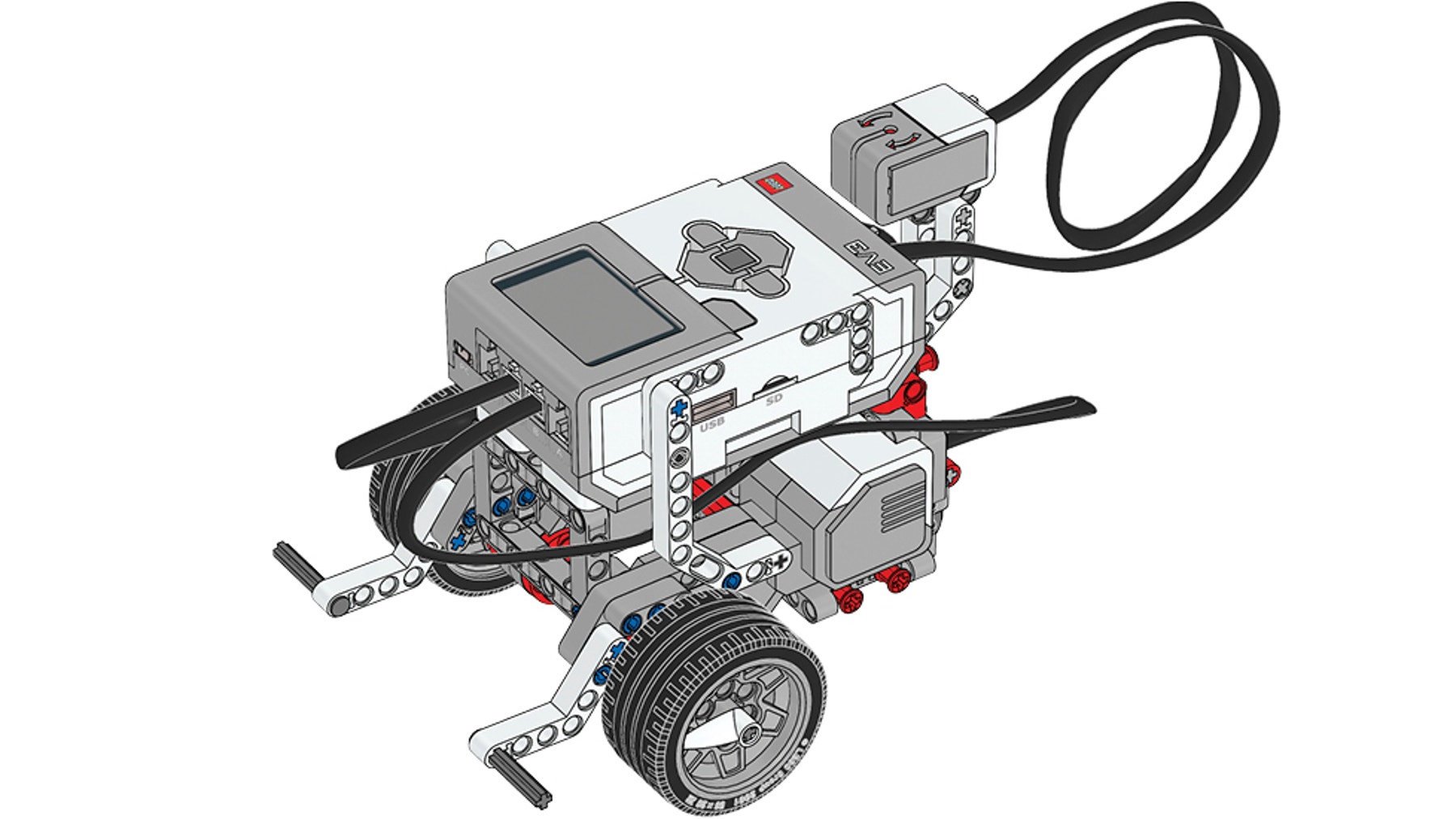Angles and Patterns
Use the Gyro Sensor to turn by precise angles and use My Blocks to organise programs.

Lesson plan
1. Prepare
- Read through the pupil material in the EV3 Classroom App.
- Collect information about how the Gyro Sensor works.
- It’s recommended that the pupils have completed the other lessons in this unit before beginning this challenge.
- In order to complete this lesson, the pupils will have to have built the Driving Base model, which will take about 30 minutes to complete.
2. Engage (5 Min.)
- Use the ideas in the ‘Ignite a Discussion’ section below to engage your pupils in a discussion relating to this lesson.
- Divide your class into teams of two pupils.
3. Explore (20 Min.)
- Have each team build the Gyro Sensor extension for their Driving Base.
- Allow them time to use the provided programming stacks to explore how the Gyro Sensor can be used to detect changes in orientation and how My Blocks can be used to organise programs.
4. Explain (5 Min.)
- Facilitate a discussion about how My Blocks can be used to organise and reuse code.
5. Elaborate (15 Min.)
- Challenge your pupils to use the Gyro Sensor and My Blocks to program their Driving Bases to drive in a square three times and then drive in a triangle.
- Don’t forget to leave some time for tidying up.
6. Evaluate
- Give feedback on each pupil’s performance.
- To simplify the process, you can use the assessment rubrics that have been provided.
Ignite a Discussion
Gyro Sensors measure changes in rotation to help determine orientation. Wheeled robots can use such sensors to navigate, make precise turns and keep track of their position.

Use these questions to engage your pupils in a discussion about the ways in which robots can use Gyro Sensors:
- In which situations is it useful to detect changes in orientation so that a robot can navigate?
- Can you name some devices that use a Gyro Sensor?
- How does a Gyro Sensor work?
Building Tips

Building Instructions
Keep the Driving Base assembled after use, rather than taking it apart.
Using the Gyro Sensor
The Gyro Sensor must be completely motionless while it’s being plugged into the EV3 Brick and during the start-up of the EV3 Brick. If the Gyro Sensor’s angle readings change while the Driving Base is standing still, unplug the sensor and plug it back in.
Coding Tips
Main Program

Possible Solution

Differentiation
Simplify this lesson by:
- Spending additional time explaining how to use the Gyro Sensor
- Explaining how to create and use My Blocks
Take this lesson to the next level by:
- Challenging your pupils to create a program that will make their Driving Base trace out the letter ‘Z’
- Creating a maze and challenging your pupils to see how quickly they can create a program to navigate through it
Assessment Opportunities
Teacher Observation Checklist
Establish a scale that suits your needs, for example:
- Partially accomplished
- Fully accomplished
- Overachieved
Use the following success criteria to evaluate your pupils’ progress:
- The pupils are able to program their Driving Bases to drive in patterns using the Gyro Sensor’s angle readings.
- The pupils are able to construct a My Blocks program.
- The pupils are able to understand how My Blocks can be used to tidy up their programs and make them easier to manage.
Self-Assessment
Have each pupil choose the level that they feel best represents their performance.
- Bronze: I’ve made the Driving Base turn 45 degrees based on the Gyro Sensor’s angle readings.
- Silver: I’ve used a My Block to make the Driving Base drive in a triangle based on the Gyro Sensor’s angle readings.
- Gold: I’ve created a My Block to make the Driving Base drive in a square based on the Gyro Sensor’s angle readings.
- Platinum: I’ve created and used a My Block to organise my program, which makes the Driving Base repeatedly drive in a square based on Gyro Sensor’s angle readings.

Language Arts Extension
To incorporate the development of language arts skills:
- Have your pupils prepare and deliver a presentation about how they’ve programmed their Advanced Driving Base and how they've used My Blocks to help manage and simplify their programs.
Note: This will require additional time.
Career Links
The pupils who enjoyed this lesson might be interested in exploring these career pathways:
- Information Technology (Computer Programming)
- Information Technology (Game Programming)
- Information Technology (IT Applications)
Teacher Support
The pupils will:
- Program their Driving Base to stop at specific angles
- Use My Blocks to help organise their programs
LEGO® MINDSTORMS® Education EV3 Core Set
EV3 Classroom App
Protractor (optional)
Computing at School Progression Pathways
Algorithms:
- Designs solutions (algorithms) that use repetition and two-way selection i.e. if, then and else.
- Uses logical reasoning to predict outputs, showing an awareness of inputs.
- Designs solutions by decomposing a problem and creates a sub-solution for each of these parts.
- Recognises that different solutions exist for the same problem.
- Recognises that different algorithms exist for the same problem.
Programming & Development:
- Creates programs that implement algorithms to achieve given goals.
- Uses post-tested loop e.g. ‘until’, and a sequence of selection statements in programs, including an if, then and else statement.
- Understands the difference between, and appropriately uses if and if, then and else statements. (AL)
- Uses a variable and relational operators within a loop to govern termination.
- Designs, writes and debugs modular programs using procedures.
- Knows that a procedure can be used to hide the detail with sub-solution.
- Understands that programming bridges the gap between algorithmic solutions and computers.
- Uses a range of operators and expressions e.g. Boolean, and applies them in the context of program control.
Hardware & Processing:
- Knows that computers collect data from various input devices, including sensors and application software.
Information Technology:
- Makes appropriate improvements to solutions based on feedback received, and can comment on the success of the solution.
- Uses criteria to evaluate the quality of solutions, can identify improvements making some refinements to the solution, and future solutions.
- Designs criteria to critically evaluate the quality of solutions, uses the criteria to identify improvements and can make appropriate refinements to the solution.




